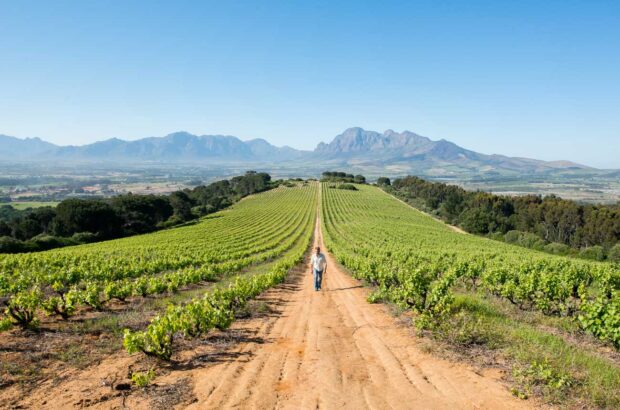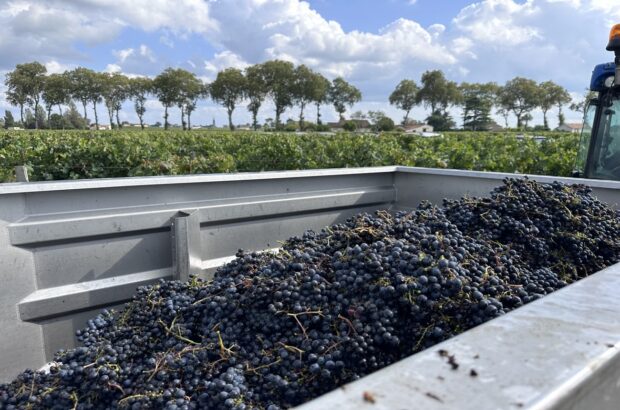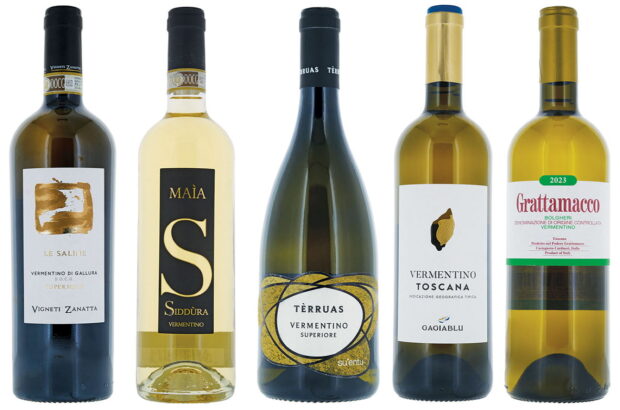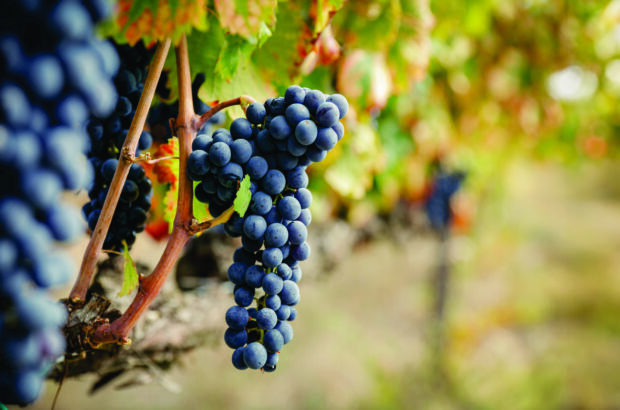Rio de Janeiro is Brazil’s first city of sun and fun, but São Paulo is its capital of dining and cocktails. Thanks to the melting pot of communities that migrated there from diverse corners of Europe and Asia, Brazil’s largest city will satisfy even the most demanding palates.
‘Sampa’, as it’s widely known, is a love-it-or-hate-it kind of metropolis, busy and fast-paced, whose 12 million paulistanos (residents) dance to their own beat. Getting around can be time consuming (many chief executives commute by helicopter; the city has the world’s largest helicopter fleet), but the intense traffic jams are offset by spontaneous samba gatherings on street corners, precious moments where Brazilians’ joviality hot-steps to life.
Once you have become accustomed to the hustle, the steep, leafy streets and never-ending avenues of skyscrapers daubed with enormous murals will begin to reveal their charms. The metro system and extensive bus network are both relatively straightforward to use; single tickets can be bought for the equivalent of less than £1, though fares for both can be paid using a rechargeable Bilehete Unico card. Car service apps are very economical.

Credit: JP Map Graphics Ltd
Portuguese settlers gave the country its language and industries such as sugar cane, rubber and coffee production, but they aren’t unique in leaving their mark on São Paulo’s culinary scene. As home to about 660,000 people of Japanese descent – the largest such community outside the land of the rising sun – top-notch omakase, sushi counters and ramen bars (the revered noodle bowl is often written and pronounced by Brazilians as ‘lamen’) form a prominent part of the cityscape.
Fans of Japanese and Korean foods should browse the Liberdade and Bom Retiro neighbourhoods, respectively. Italian heritage is so dominant that taking part in paulistanos’ Sunday-night pizza ritual is non-negotiable. Lebanese, Syrian and West African food – the latter a culinary legacy of slavery – have also added threads to Sampa’s vibrant tapestry.
Starry kickstart
The city’s dining scene was recently given a boost by the relaunch of Brazil’s Michelin Guide in May; São Paulo establishments picked up 98 mentions, including three two-stars, 12 one-stars and 30 Bib Gourmands (‘offering exceptionally good food at moderate prices’, according to the Guide).
Thanks to this thriving gastronomic scene and a sophisticated dining public, you can drink as well as you eat. Wine lovers will be pleased to know that Brazilian winemakers are slowly but steadily growing in number, as is interest in sake and local rum-like distillate cachaça.
One of the city’s finest cellars is at Tuju, a newly minted two-star Michelin restaurant in Jardim Paulistano. Having shuttered the restaurant during the pandemic, chef Ivan Ralston returned with an ultra-seasonal menu, using locally sourced, emissions-light seasonal ingredients (guided by rainfall rather than temperature). Standout dishes in his Drought menu include hare with foie gras and cod with trout roe.

Katherina Cordás and Ivan Ralston of Tuju. Credit: Rubens Tatibana
His wife Katherina Cordás developed Tuju’s research centre, which informs the menu; she also heads the front-of-house team. The 1,300 label-strong cellar is curated by rising-star sommelier Juliana Carani. The 12-course tasting menu can be paired with one of her three lists – World Classics, Discoveries and South America – or by the bottle. There are various vintage verticals available, including Château d’Yquem. Make sure to order award-winning bartender Rachel Louise’s take on an Espresso Martini, made with jackfruit.
Where to discover Brazilian wine and food
The Brazilian wine movement has come on in leaps and bounds in the last 15 years, as vintners have turned their hands to grape cultivation.
Southern regions Serra Gaúcha – home of Vale dos Vinhedos, Brazil’s first appellation of origin – Monte Belo and the Campanha Gaúcha prairies have been steadily forging their own winemaking paths, with traditional-method sparkling wine and dry whites receiving the most acclaim. Winemakers’ enthusiasm for expressing terroir has been matched by local drinkers’ curiosity to try homegrown labels, which has in turn led to an increase in the number of enotecas (wine shops) and bars opening.
Try local wines with favourite Brazilian dishes such as feijoada, a hearty stew of pork, beef and beans, at Bib Gourmand-rated A Baianeira (@abaianeira) located in São Paulo’s MASP museum of art in Centro, or picanha steak at churrascaria A Figueira Rubaiyat in Jardins, under the branches of its majestic Bengal fig tree. Revered finger food torresmo (deep-fried pork belly) is a staple at any boteco (traditional bar), and it’s best enjoyed with a very cold lager.

Dine in the shade of the Bengal fig tree at A Figueira Rubaiyat
For Brazilian wine souvenirs, try independent store and restaurant Enoteca Saint VinSaint in Vila Nova Conceição. Some wine bars double up as bistrots, such as Clos Elevado (@clos_winebar) in Consolação, and Huevos de Oro (@huevosdeorobar), a Jerez and Spanish specialist in Pinheiros, from the team behind Sede261 (see below).
There’s renewed interest in cachaça, Brazil’s sugar-cane spirit, most commonly consumed in Caipirinha cocktails. Order a cashew Caipi and a moqueca (seafood stew) at Mocotó in Vila Medeiros, whose bar lists at least 10 small-batch wines, or ask to taste Brazilian wood-aged cachaças at Jiquitaia in Paraíso. The restaurant is ably led by the Corrêa Bastos siblings – sommelier Nina curates the cocktail list and her brother Marcelo cooks traditional dishes such as chicken coxinhas.
Local talent

Italian cuisine with Brazilian flair at Nelita
At Nelita (@nelita.restaurant), a contemporary Italian restaurant in Baixo Pinheiros, chef Tássia Magalhães leads an all-female kitchen staff, while sommelier Danyel Steinle champions Brazilian producers.
His 90-label list includes sparkling and natural wines from the regions of Serra Gaúcha, Monte Belo and Campanha Gaúcha in Brazil’s far south. ‘High quality has already been established,’ he says. ‘Labels that I particularly appreciate include Vinhas do Tempo’s Chardonnay, Arte da Vinha’s Francamente Franc and Era dos Ventos’ skin-contact Peverella.’ Later this year, the duo will open El Lita wine bar, right opposite Nelita.

15 courses of fun await at Evvai. Credit: Tadeu Brunelli / TB Foto
Inspired by Italian cuisine and seamlessly blending it with São Paulo’s own culinary heritage, a fun and intelligent 15-course paired tasting menu awaits at Evvai in Pinheiros district; think scallop bombs, palm-heart linguine and coco-cauliflower for dessert. Talented young chef Luiz Filipe Souza’s talents go beyond the burners: he makes drawings of the dishes, so you get a small album of the illustrated menu to take home, and has devised small-measure cocktails to pair with his dishes.
Souza’s efforts saw Evvai upgraded from one to two Michelin stars earlier this year. The wine list managed by sommelier Marcello Fonseca surely contributed; the French-led list includes a healthy range of Brazilian labels from Don Abel, Leone di Venezia and Zanotto, among others.
Putting wine first
A wave of wine-forward, sommelier-run establishments are exciting paulistanos, who increasingly appreciate international wines as well as those from Brazilian producers.
Ripping up the rulebook is award-winning bar and wine shop Sede261 (@sede261) in Pinheiros, led by industry icons Cássia Campos and Daniela Bravin, whose relaxed approach has made it a firm favourite. With a rapidly changing list of around 50 wines, they set up folding chairs in the street and crack open that day’s selection, sometimes inviting chef friends to knock up some street food. Drinkers order by the glass or bottle from the tiny wooden bar before returning to the buoyant streetside festa.

Lucas Dante and Gabrielli Fleming, Restaurante Cepa. Credit: Felipe Rau
Meanwhile, diners eating at Restaurante Cepa (@restaurante.cepa) put themselves in the capable hands of sommelier Gabrielli Fleming and her bountiful list of 300 natural wines, including Brazilian wines such as Era dos Ventos’ Trebbiano On the Rock.
‘It’s crazy to stock so many labels,’ she says, ‘but I love to share wines from around the world.’ Fleming’s ‘madness’ has paid off, as she has created a destination for natural-wine fans, first in far-flung Vila Gomes Cardim but recently re-opened in more easily accessible Pinheiros. There’s also high praise for chef Lucas Dante’s tasty small plates, such as braised squid and Wagyu tongue.
When it’s time to freshen the palate, São Paulo plays a strong suit in both cachaça and sake. Aizomê is a peaceful lunchtime omakase in Jardim Paulista that serves 50 junmai sakes in various-sized formats, while in Vila Mariana sake sommelier Yasmin Yonashiro shares her passion for Japan’s emblematic liquid culture at Jojo Ramen (@jojo_ramen).

Omakase at Aizomê. Credit: Rafael Salvador
My perfect day in São Paulo
Given the city’s sprawling nature, choose a neighbourhood and plan accordingly to best use your time; near the Pinheiros river, upscale Jardim Paulista and trendy Pinheiros are neighbouring districts, so it’s straightforward to traverse both. I suggest wearing sneakers to get to know Pinheiros or the historic Centro on foot.
Morning
In Centro, wake up with specialty coffee at hipster café Takkø (@takkocafesp). If you are in Pinheiros, Um Coffee Co has various outposts; enjoy your caffeine fix at the Rua Pais Leme branch before walking to Beco do Batman, a vibrant street renowned for its murals.
Lunch
I love the juxtaposition of calming Cora’s (@cora.sp) delicious seasonal dishes and its sixth-floor location alongside a clamorous highway in Centro. Another option is to refuel at Corrutela (@corrutela); this Michelin Bib Gourmand-rated restaurant is a stone’s throw from Beco do Batman and the wine list is constantly changing.
Evening
Two of my favourite bars for an aperitif with live music are the upscale Baretto, complete with piano player, and the Rosewood Hotels’ Rabo di Galo (see below) – named after the signature cachaça-based cocktail – which is known for its live samba bands.
Enjoy an evening glass of Casa Tés Sauvignon Blanc at Beverino Vinhos Naturais (@beverino. vinhos) before pigging out over dinner at legendary A Casa do Porco, where pork is served in a dazzling array of ways (they slow roast two whole free-range pigs a day). Or for something a bit more unusual, feast on lemongrass-flavoured ants from the unique Amazonian menu at D.O.M.. Or check out Charco’s (@charcorestaurante) Rio Grande do Sul-inspired flame-grilled fare, prepared by young gun Tuca Mezzomo.
I like to round off a night sipping a Brazilian Martinez at serious speakeasy The Liquor Store (@theliquorstore.sp), reservations required, or with a cachaça-forward Casulo cocktail at cool underground watering hole Bar dos Arcos.
How to get there
British Airways and LATAM/Virgin fly direct from London Heathrow daily, with flights taking about 11 hours to São Paulo-Guarulhos; from the US, direct flights depart from Miami, Orlando, New York and Washington DC daily. To reach Vale dos Vinhedos AO, fly to Porto Alegre then hire a car; it’s a two-hour drive to the valley.











